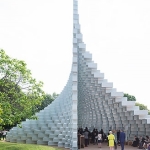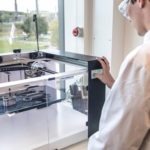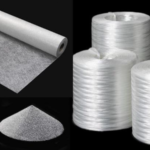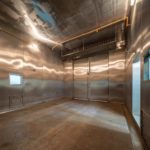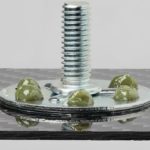Dr Wendel Sebastian, Reader in Structural Engineering in the Department of Civil Engineering at the University of Bristol, led a project where sensors were distributed throughout the Serpentine Pavilion, an ‘unzipped wall’ designed by architects Bjarke Ingels Group (BIG), which transformed from a straight line at the top to a three-dimensional curved structure lower down. The project logged data on the Pavilion structure’s response to both environmental (wind, temperature) and gravity (self-weight) loads.
Composites are attractive to architects as they have the ability to embed multi-functionality within these materials. The decision to construct the Serpentine Pavilion from GFRP “boxes” was influenced by the fact that this specific GFRP material was both translucent and load-bearing. At 14 metres high, 26 metres long and over 12 metres wide, the translucent exhibition structure was designed for crowds of up to 200 people and was visited by thousands of sightseers throughout the summer.
Its advanced shape and assembly meant that the Pavilion exhibited a complex and hybrid structural response – partly as a dome, partly as a frame – to applied loads. Safety factors were used in its design to ensure the structure was reliable. However, it was recognised that monitoring a real, as-built structure would present a unique opportunity to understand its true structural action and pave the way for smaller safety factors in the design of future exhibition structures.
Dr Sebastian said: “Advanced composites behave differently from traditional construction materials such as steel and concrete, so the improved understanding that we gain using data from a spectrum of real composite structures will help us use these materials even more creatively in the future.”
Working closely with the contractor responsible for taking down the structure, Dr Sebastian was able to log data which gave insight into the stresses released by the structure during dismantling. Such stresses were locked into the structure from the beginning, owing to the need to overcome any lack-of-fit between the boxes during the original assembling of the Pavilion. In reality, random differences from tolerances stated on engineering drawings mean that lack-of-fit stresses, which can be particularly important for structures made from slender members, are also random and are therefore difficult to predict with confidence.
The opportunity to understand these stresses using sensor data from a real structure has been a crucial feature of this project. Normally such stresses remain a secret of the structure. Given that the sensors were installed after the Pavilion was built, it is only because these stresses, slightly modified over time, were released by dismantling that this rare opportunity exists to attempt their quantification from the sensor data.
Dr Sebastian has also been gathering sensor data from a GFRP traffic bridge used on the road network near Bristol. This lightweight bridge was prefabricated and quickly lifted into position using a low-power crane, thereby enabling the early removal of a seven kilometre diversion needed during the bridgeworks.
The research will be presented at this year’s Advanced Composites in Construction (ACIC) conference.
Caption picture N. 1
Serpentine Pavilion 2016 designed by Bjarke Ingels Group (BIG);
Image credit © Iwan Baan
Caption picture N. 2
Dr Sebastian interrogates the monitoring system
Caption picture N. 3
Bristol GFRP road bridge being craned onto its supports



